The Secret to Authentic Bolognese Sauce | Bolognese Ragù Recipe (VIDEO)
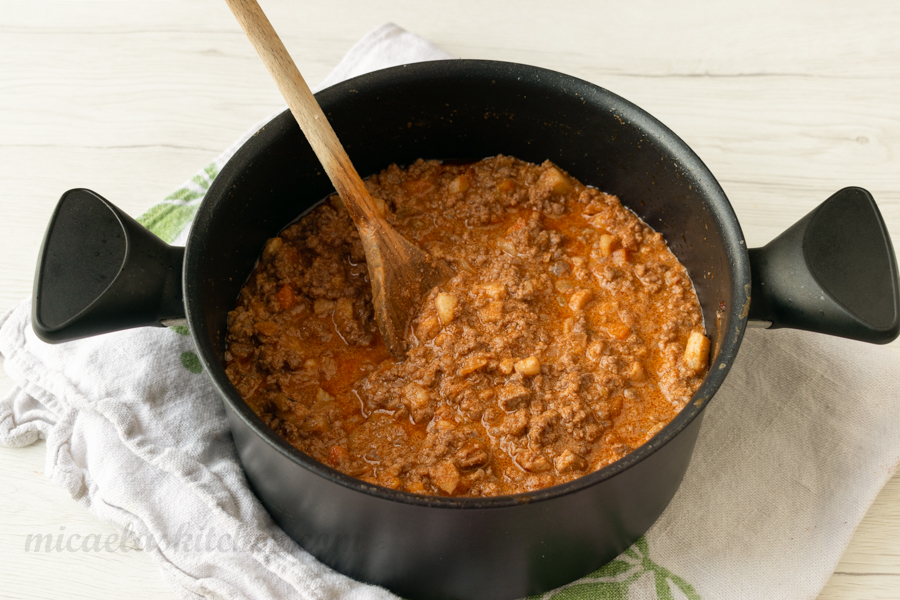
Unlock the secret to authentic Bolognese sauce with this recipe that includes a surprising ingredient: Milk! This traditional Italian sauce will elevate your pasta dishes to the next level. Give it a try today!
Bolognese sauce (“Ragù alla Bolognese” in Italian) is considered the quintessential Italian meat sauce and is perfectly suited for pasta dishes like lasagna, tagliatelle and gnocchi. While variations exist between homes and regions, what is presented here is the authentic recipe for Ragù alla Bolognese as registered with the Chamber of Commerce in Bologna, Italy. Following each step precisely will result in a true representation of this famous sauce that has become synonymous with Italian cuisine worldwide.
Traditional Bolognese Sauce: The History
The origin of ragù is difficult to establish firmly. In reality, the name ragù comes from the French word “ragout” meaning to awaken the appetite, renew taste, and add more flavor. Some accounts attribute ragù to a cook of French King Louis XIV who was originally from Bologna; he supposedly had the idea to grind stew and use it to season pasta. Others date ragù back even earlier, to the times of the ancient Romans, who prepared a kind of stew.
In October 1982, while Italy celebrated victory in the World Football Championship, the Bologna delegation of the Italian Academy of Cuisine decided to deposit the certified original recipe for classic Bolognese Ragù with the notary at the Chamber of Commerce in Bologna. This ensured the tradition would be passed to future generations. It had taken long and strenuous research, arguments and consultations to put a seal on this iconic part of Italian cuisine.
Authentic Bolognese Sauce Video Recipe
The Secrets of Authentic Ragù Bolognese
The secret to making a Bolognese sauce that will take your recipes to the next level? It may be hard to believe, but authentic Bolognese calls for dry white wine, not red, plus a splash of milk!
The real magic is that milk gives the sauce such an incredible sweetness. The use of milk in this recipe is not only used to tone down the acidity of the wine and tomato, but above all it is used to obtain the classic flavor of the ragù. And, as absurd as it may seem, real ragù is made with dry white wine, and not red wine. I swear, just try it. Those skeptical of this approach will be convinced by experimenting it themselves.
Bolognese Ragout Preparation notes
- The total cooking time of the ragù is approximately 3–4 hours, depending on the type of meat used. Historically, cooking times were even prolonged to 6–7 hours because meat from older cows was used when they were no longer able to work in the fields, and therefore the meat was inevitably tougher. As a result, cooking was extended to ensure the meat became softer.
- Originally, the recipe did not include tomato at all, which was then added around the year 1700. As an alternative to tomato sauce, if a more full-bodied ragù is preferred, 40 grams of triple tomato concentrate can be added.
How To Make The Best Bolognese Sauce
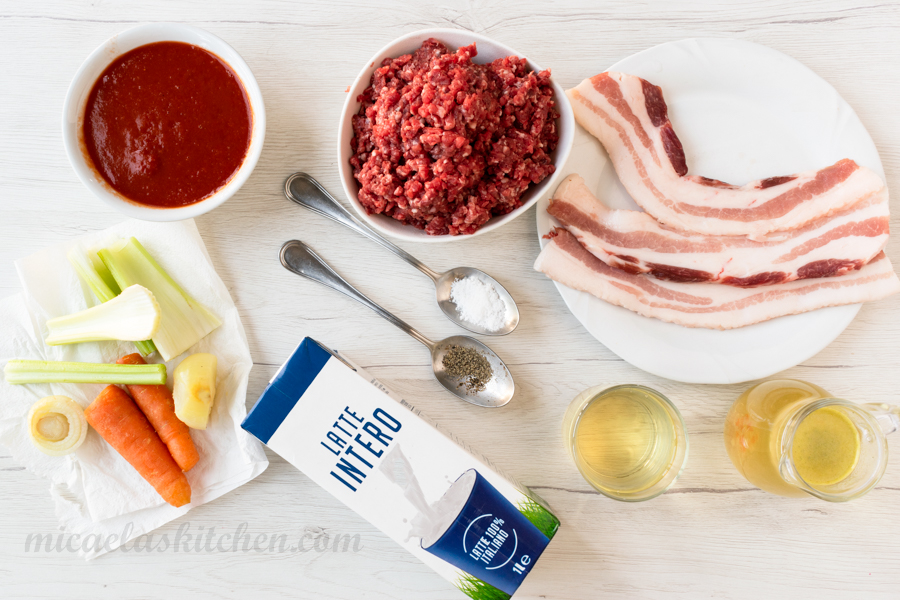
Ingredients (6 servings):
- 1-liter Fresh whole milk (4 cups plus 3 tbsp)
- 100 g Celery (3½ oz)
- 100 g Carrots (3½ oz)
- 60 g White or yellow onion (2 oz)
- 300 g Pancetta or bacon or pork belly (10½ oz)
- 600 g Ground beef and pork mix (1 lb 5¼ oz)
- 1 glass Dry white wine
- 250 g Tomato puree (1 cup plus 1 tbsp)
- 250 ml Vegetable broth (1 cup plus 1 tbsp)
- Salt and pepper to taste
Ragù Alla Bolognese Instructions:
Prepare the ingredients
Prepare the milk — Pour one liter of whole milk into a saucepan and bring it to a boil over medium heat. Allow the milk to cool slightly, then use a strainer or tongs to collect the cream that rises to the surface and set it aside in a bowl (1). Now reserve half a liter of the remaining milk (2) to use in cooking the ragù, as its sweetness will balance the acidity from the wine and tomatoes while also contributing characteristic flavor.
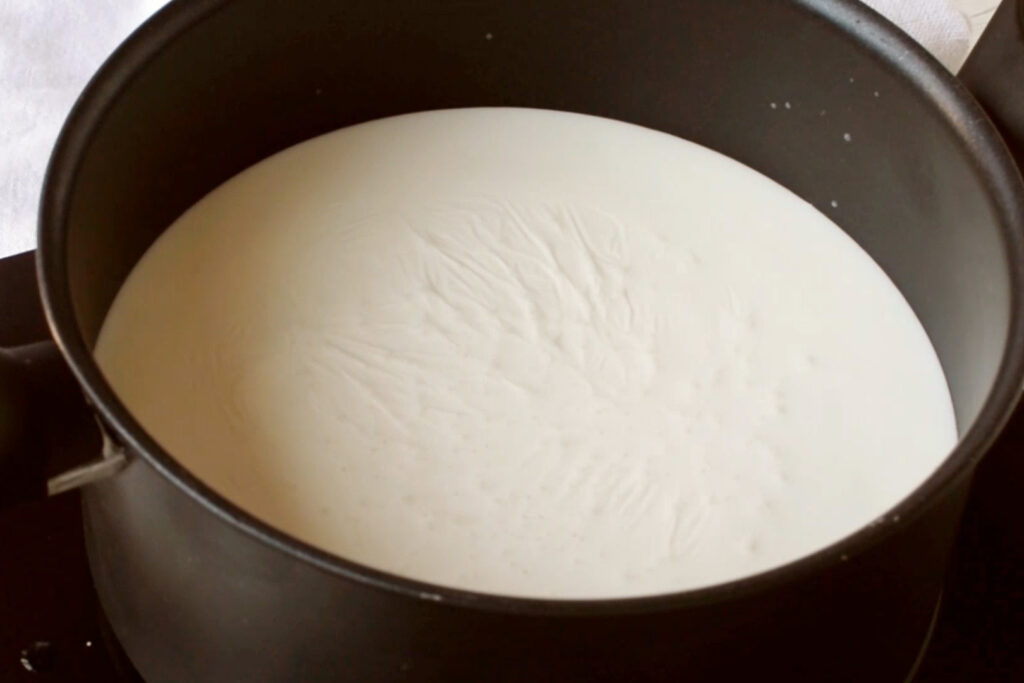
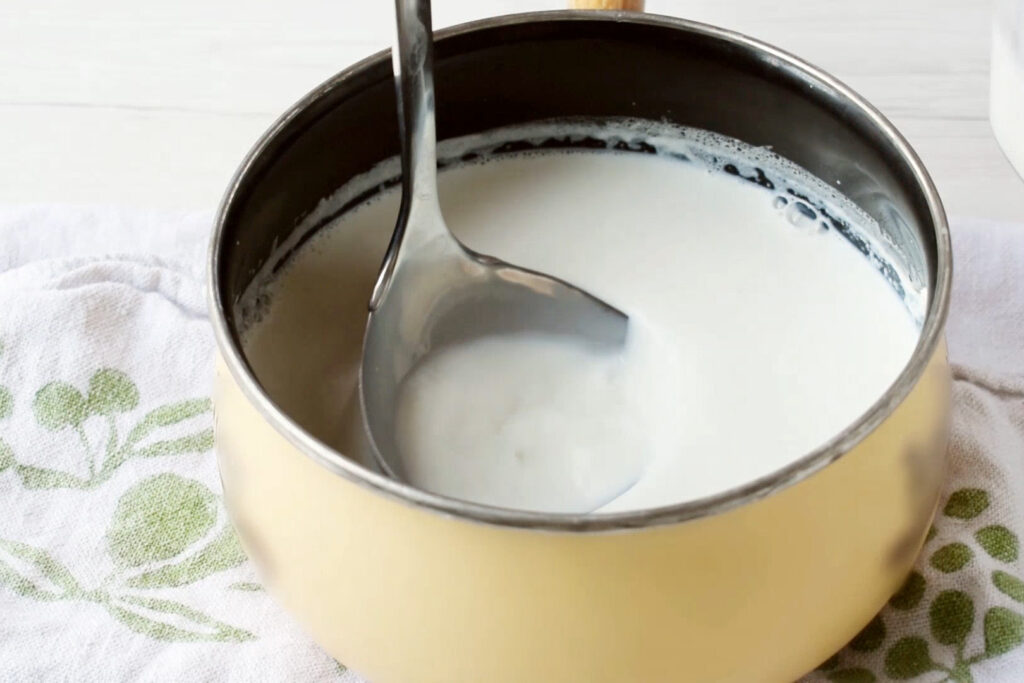
Chop the ingredients — Finely chop a mix of celery, carrot (3), and onion. Also chop bacon first into small pieces and then further chop or mince until paste-like and slightly grainy (4).
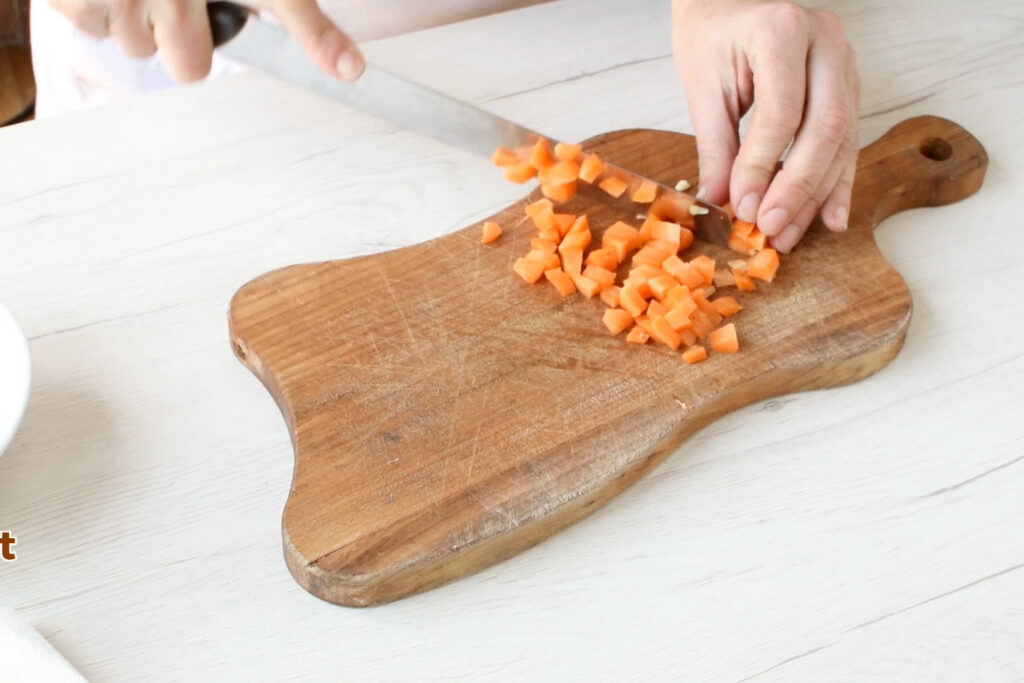
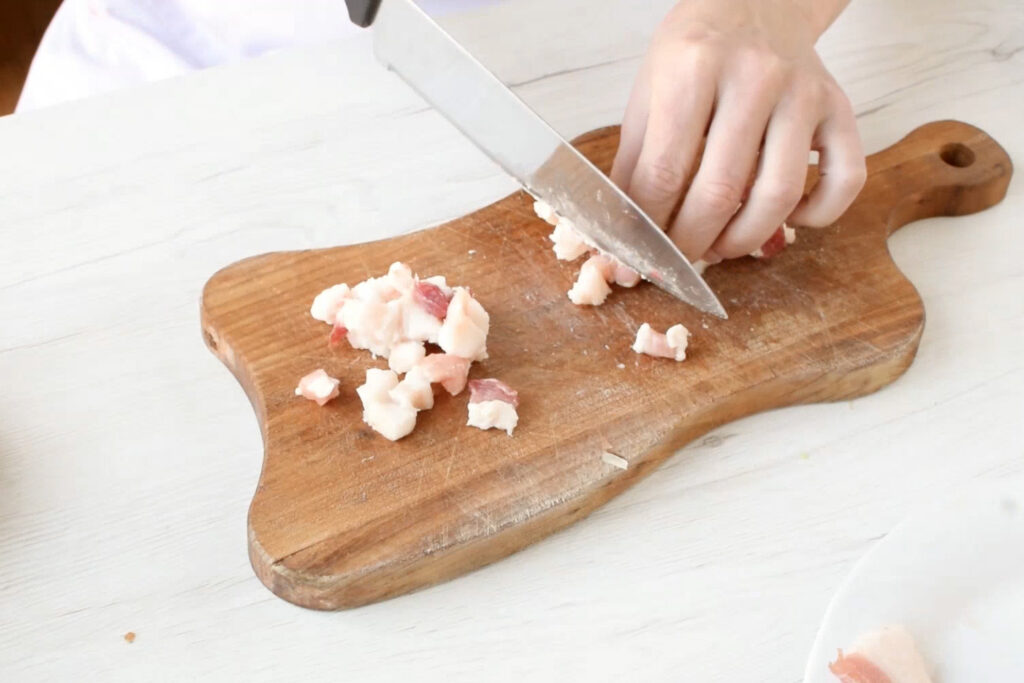
Cook Bolognese Sauce
Cook Pancetta — Heat a pan, preferably earthenware, over medium-low heat. Add the chopped bacon and sweat it, stirring continuously with a wooden spoon, until the fat slowly renders and coats the bottom of the pan. Then raise the heat and brown the bacon in its own fat for about 3/4 minutes.
Add vegetables and ground meat — Add the chopped vegetable mix (onion, celery, carrot) to the bacon and sauté for about 7–8 minutes (5). Then add the ground meat and break it up well with a wooden spoon so it releases some of its liquids (6), which will evaporate away (this will take about 20 minutes).
Add wine, broth, tomato puree and milk — Once the liquids from the meat have been absorbed and evaporated, add a glass of dry white wine. Allow the alcoholic portion to burn off over high heat, then once absorbed, add tomato puree. Stir to combine, then add 250 ml of vegetable broth (7). Cover and bring to a boil over high heat, then reduce heat and simmer for about two and a half hours with the lid slightly ajar, stirring occasionally. Around the halfway point, add about 250 ml of milk and stir to incorporate (8), then continue cooking with the lid partly open. Once this milk is absorbed, add the remaining 250 ml.
Final ingredients — Stir again, then season with salt and pepper. As a final ingredient, stir in the cream obtained from boiling one liter of fresh whole milk (9). Continue cooking for another 15 minutes, or until the cream is fully absorbed (10).
The authentic Bolognese ragù, is now ready to use in lasagna, tagliatelle, or other pasta dishes.
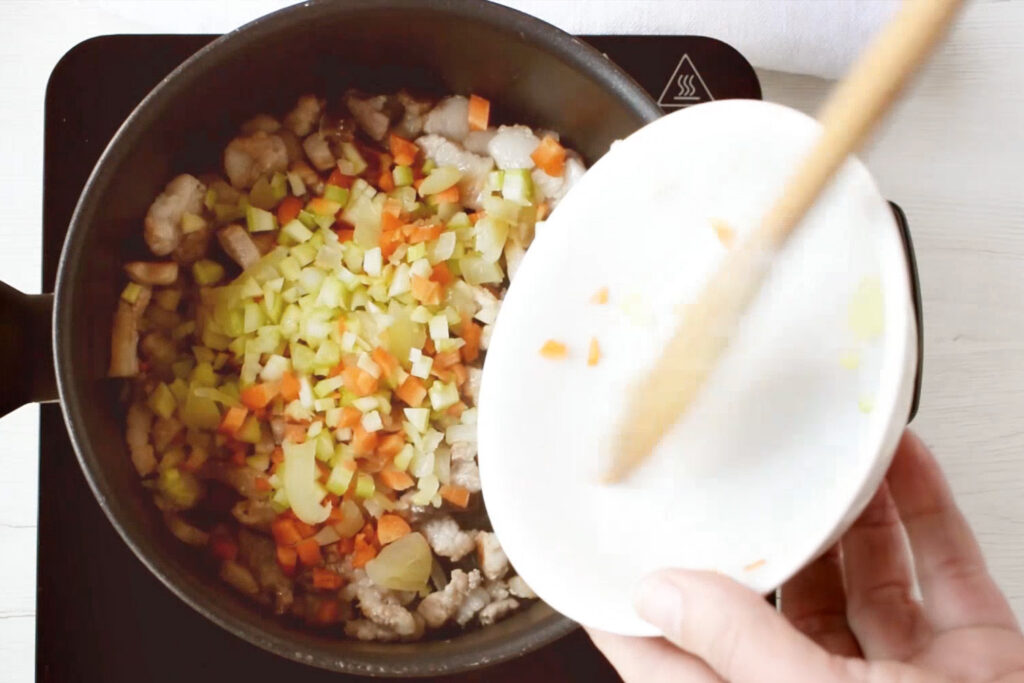
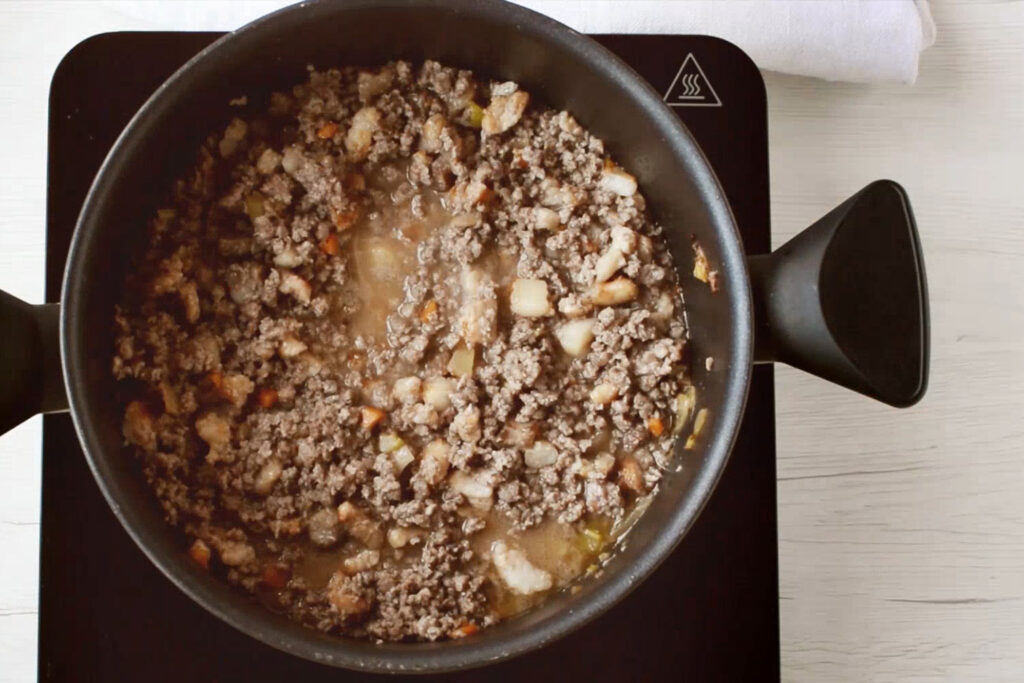
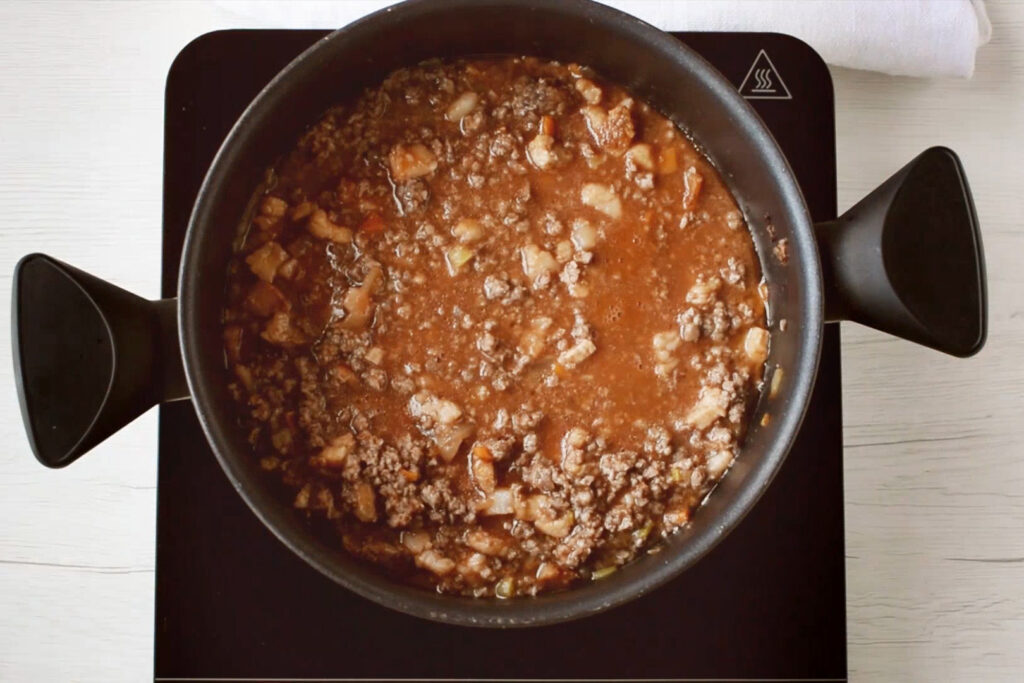
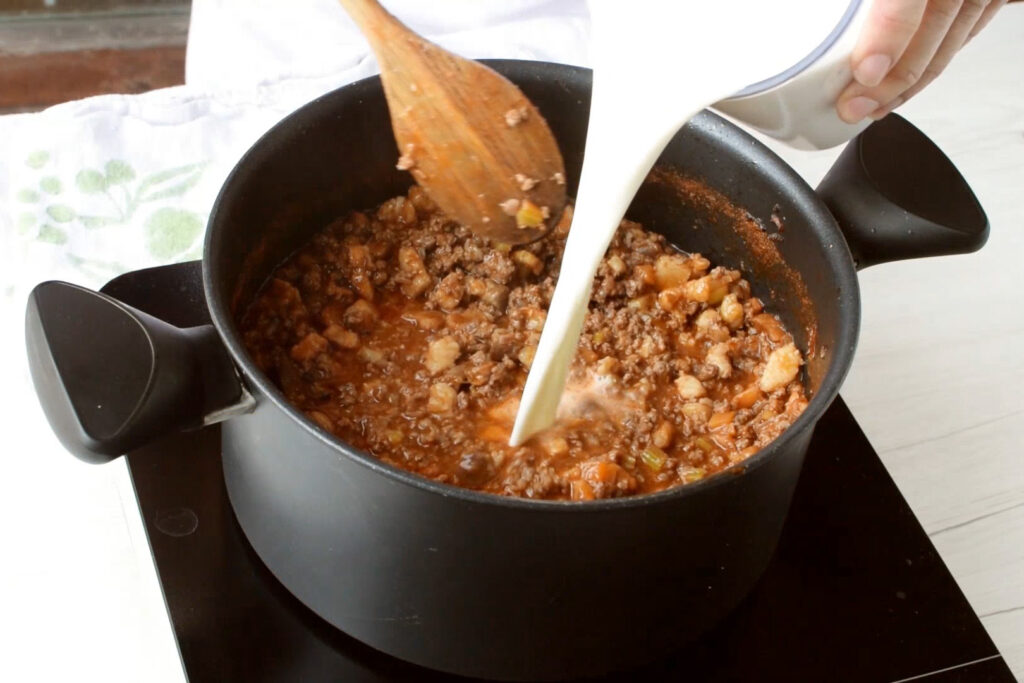
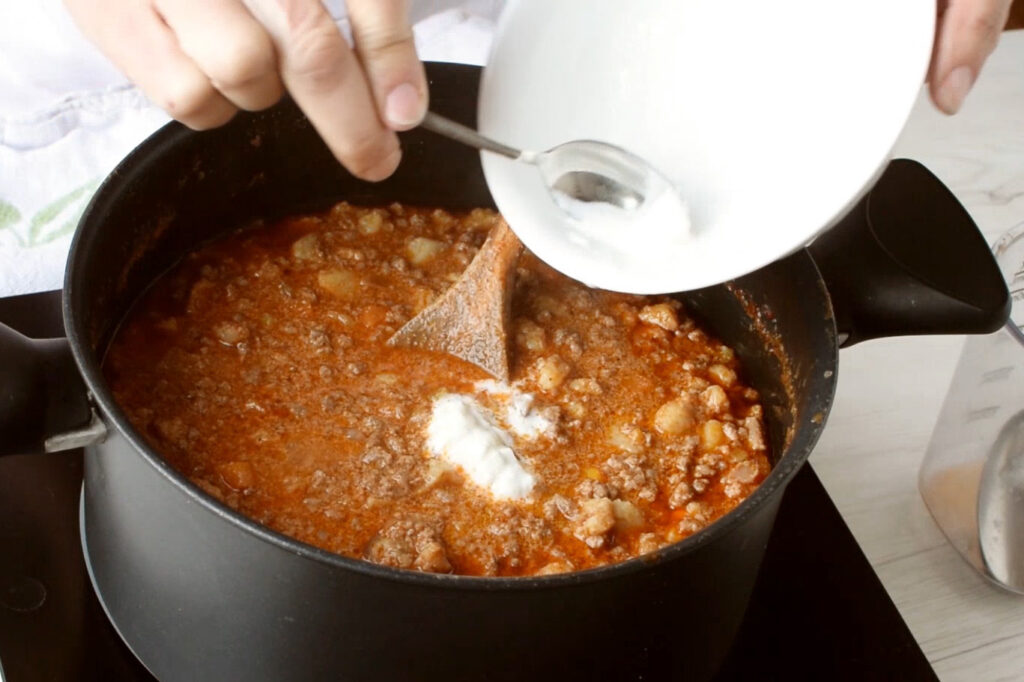

How to Store Bolognese Sauce
Allow the Bolognese sauce to cool to room temperature before storing it. This helps prevent condensation from forming in the storage container, which can lead to bacterial growth. Once cooled, transfer the Bolognese sauce to airtight containers or resealable bags for storage. Make sure the containers are freezer-safe if you plan to freeze the sauce.
If you intend to consume the sauce within a few days, store it in the refrigerator. Properly sealed Bolognese sauce can typically last in the fridge for up to 3–4 days. For longer-term storage, you can freeze Bolognese sauce. Portion it into smaller containers or resealable bags to expedite the thawing process and reduce waste. Frozen Bolognese sauce can last for 3–4 months in the freezer.
When ready to use frozen Bolognese sauce, transfer it to the refrigerator to thaw overnight. You can also thaw it using the defrost setting on a microwave for quicker thawing.
Reheat the Bolognese sauce thoroughly before serving. You can do this on the stovetop over low to medium heat, stirring occasionally to ensure even heating. Make sure the sauce reaches a safe internal temperature of 74 °C (ca. 165 °F) before serving.
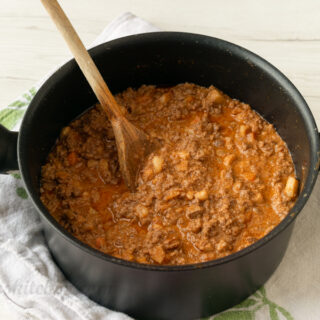
The Secret to Authentic Bolognese Sauce | Bolognese Ragù Recipe
Ingredients
- 1- liter Fresh whole milk 4 cups plus 3 tbsp
- 100 g Celery 3½ oz
- 100 g Carrot 3½ oz
- 60 g White or yellow onion 2 oz
- 300 g Pancetta or bacon or pork belly 10½ oz
- 600 g Ground beef and pork mix 1 lb 5¼ oz
- 1 glass dry white wine
- 250 g Tomato puree 1 cup plus 1 tbsp
- 250 ml Vegetable broth 1 cup plus 1 tbsp
- Salt and pepper to taste
Instructions
- Pour one liter of whole milk into a saucepan and bring it to a boil over medium heat.
- Allow the milk to cool slightly, then use a strainer or tongs to collect the cream that rises to the surface and set it aside in a bowl. Once the cream is extracted, reserve half a liter of the remaining milk to use in cooking the ragù.
- Finely chop celery, carrot, and onion.
- Chop bacon first into small pieces, and then further chop or mince until paste-like and slightly grainy.
- Heat a large saucepan, preferably earthenware, over medium-low heat. Add the chopped bacon and sweat it, stirring continuously with a wooden spoon, until the fat slowly renders and coats the bottom of the pan. Then raise the heat and brown the bacon in its own fat for about 3/4 minutes.
- Add the chopped vegetable mix (onion, celery, carrot) to the bacon and sauté for about 7–8 minutes.
- Add the ground meat and break it up well with a wooden spoon so it releases some of its liquids, which will evaporate away (this will take about 20 minutes).
- Once the liquids from the meat have been absorbed and evaporated, add a glass of dry white wine.
- Allow the alcoholic portion to burn off over high heat, then once absorbed, add tomato puree. Stir to combine.
- Add 250 ml of vegetable broth. Cover and bring to a boil over high heat, then reduce heat and simmer for about 2 1/2 with the lid slightly ajar, stirring occasionally. Around the halfway point, add about 250 ml of milk and stir to incorporate, then continue cooking with the lid partly open. Once this milk is absorbed, add the remaining 250 ml.
- Season with salt and pepper to taste.
- Stir in the cream obtained from boiling milk. Continue cooking for another 15 minutes, or until the cream is fully absorbed.
- The authentic Bolognese sauce is ready!






